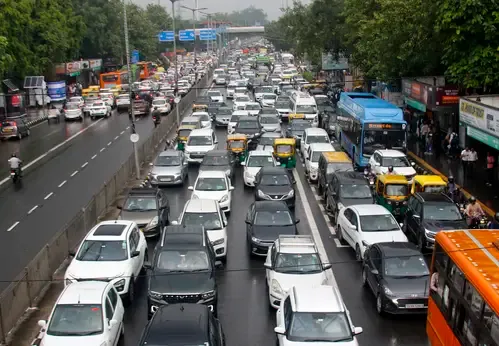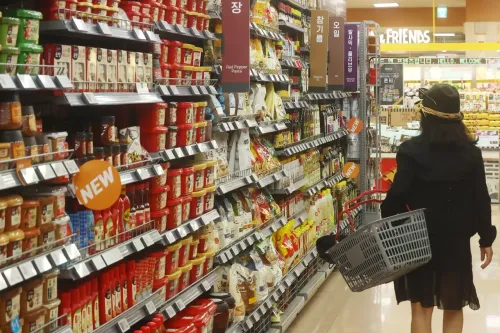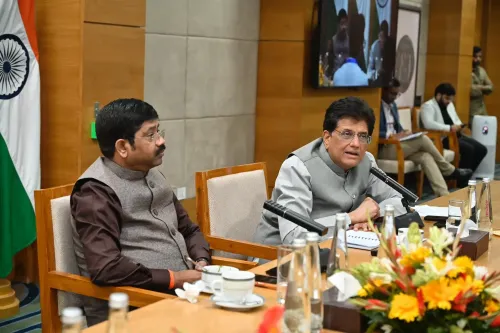Will Passenger Vehicle Volume in India Rise by 4% in FY26 Amid Surging SUV Demand?

Synopsis
Key Takeaways
- Passenger vehicle industry in India projected to grow 4 percent in FY26.
- SUV demand expected to surge by 8-10 percent.
- GST cuts on small cars to stimulate entry-level demand.
- Hybrid vehicle sales to increase by 34-38 percent.
- EV penetration remains low at 3-4 percent.
New Delhi, Nov 19 (NationPress) The passenger vehicle sector in India is projected to experience a growth of approximately 4 percent in FY26, as outlined in a recent report. This growth is attributed to factors such as GST rationalisation, declining inflation rates, and favorable fiscal policies.
The report from CareEdge Ratings indicates that SUVs will maintain their market dominance, with an anticipated growth rate of 8–10 percent.
Moreover, the GST reduction on small cars from 28 percent to 18 percent is expected to stimulate demand in the entry-level segment, while the elimination of cess on SUVs will enhance their appeal.
Hybrid vehicle sales are forecasted to soar by 34-38 percent, reaching approximately 1.07–1.10 lakh units in FY26, a significant increase from 80,406 units recorded in FY25.
While EV penetration is projected to remain modest at 3-4 percent, the report estimates electric car sales in the passenger vehicle category to be around 1.75 lakh units for FY26. In FY24, EV sales surged by 83 percent, followed by an 11 percent increase in FY25, with a total of 1.11 lakh units sold.
Madhusudhan Goswami, Assistant Director at CareEdge Ratings, noted that the GST rate cut has led to a robust increase in retail sales across both rural and urban markets.
He added, "As we move past the festival season, passenger vehicle sales are likely to stabilize; however, the growth momentum is expected to persist due to increased rural demand driven by the upcoming harvest season and seasonal wedding festivities."
In FY25, growth in the passenger vehicle industry slowed to 3.7 percent due to factors such as the stabilization of pent-up demand, rising vehicle prices, and a high base effect from previous years. Despite these challenges, new model launches and a strong demand for SUVs have helped maintain overall industry momentum.
The report emphasizes that the industry's growth trajectory will be influenced by factors like OEM pricing strategies, product refresh cycles, and a consistent improvement in macroeconomic conditions.









